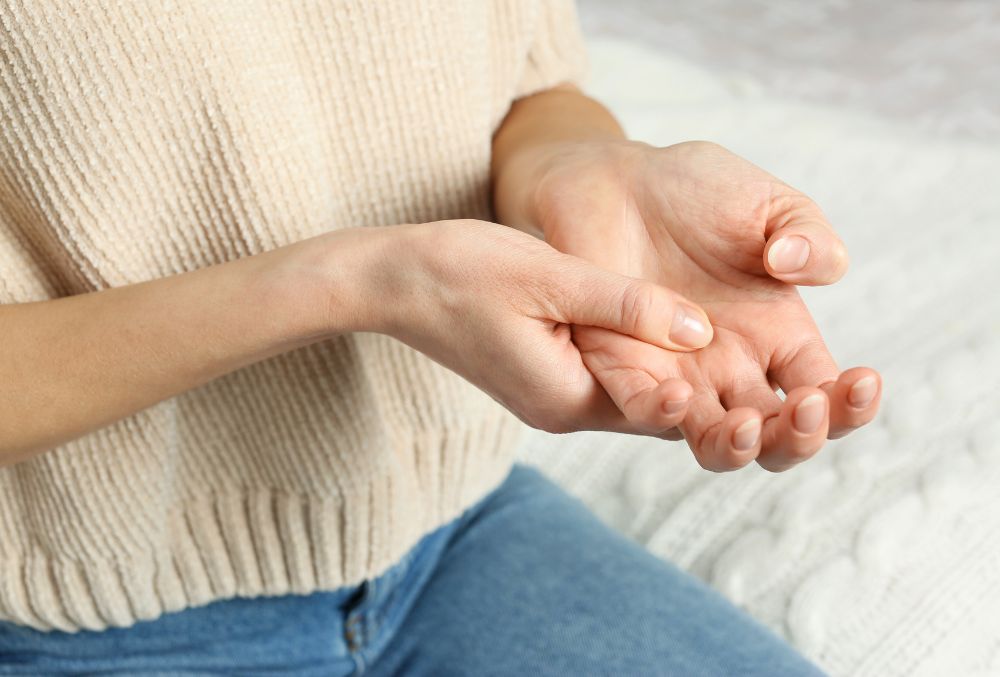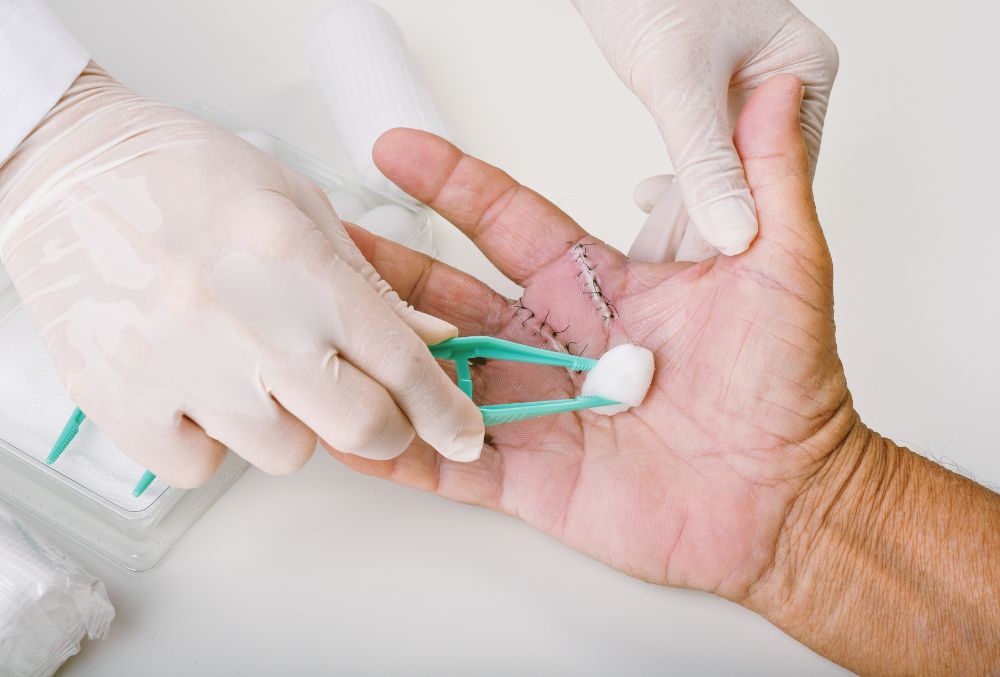Table of Contents
Trigger finger, also known as stenosing tenosynovitis, is a condition that causes a finger or thumb to get stuck in a bent position. This can be painful and make it difficult to perform everyday tasks. While non-surgical treatments are often attempted first, trigger finger surgery can be a highly effective solution when other methods fail.
Understanding the Mechanics of Trigger Finger:
Your fingers have flexor tendons that run along the palm and into each finger. These tendons are responsible for bending your fingers. They are encased within tunnels called sheaths, which keep them in place and facilitate smooth movement. In trigger finger, the sheath around a tendon becomes inflamed and thickened, narrowing the space available for the tendon to glide through. This narrowing can cause the tendon to catch or snag within the sheath, leading to the characteristic locking or popping sensation associated with the condition.

Symptoms That Warrant a Doctor’s Visit:
While mild discomfort might be initially present, several key symptoms should prompt you to seek medical evaluation to diagnose and treat trigger finger effectively:
- Pain at the base of the affected finger or thumb: This pain is often most noticeable when gripping or pinching objects, such as holding a phone, writing, or turning a doorknob. Activities that require forceful grasping can aggravate the inflammation and cause a sharp or throbbing pain at the base of the affected digit.
- A snapping or popping sensation: This sensation occurs when the tendon catches or releases within the narrowed sheath. You might feel or hear a popping sound, especially when bending or straightening the finger. This sensation can be startling and sometimes accompanied by a twinge of pain.
- Difficulty straightening the finger, especially in the morning: Due to the constricted sheath, the affected finger might get stuck in a bent position, making it difficult to fully straighten it, particularly after periods of inactivity like sleep. This stiffness can gradually improve throughout the day with increased movement, but it can be quite noticeable and frustrating in the morning.
- A visible lump at the base of the finger: This lump represents the thickened sheath encasing the tendon. It is usually located on the palm side of the hand, near the base of the affected finger, and might be tender to the touch. In some cases, the lump might be visible only when trying to straighten the finger against resistance.
Early diagnosis and treatment of trigger finger are crucial to prevent the condition from worsening and potentially avoid the need for surgery. By recognizing these key symptoms and seeking medical attention promptly, you can take control of your situation and work towards a full recovery.

Treatment Options:
Non-surgical treatments are usually tried first, aiming to reduce inflammation and improve tendon glide within the sheath. These options include:
- Splinting: Wearing a splint for a specific period helps immobilize the finger and reduce inflammation. This allows the sheath to heal and the inflammation to subside, potentially restoring smooth tendon movement.
- Cortisone injections: Cortisone is a medication injected directly into the sheath. It acts as a powerful anti-inflammatory agent, reducing inflammation and pain associated with trigger finger. This can significantly improve symptoms and restore function in some cases.
- Activity modification: Identifying and avoiding activities that aggravate the condition can help prevent further inflammation and discomfort. This might involve modifying daily tasks or using alternative tools to minimize stress on the affected finger.
If these treatments fail to provide relief after a reasonable trial period, trigger finger surgery may be recommended by your doctor. It is a minimally invasive outpatient procedure, typically performed under local anesthesia with sedation or general anesthesia depending on individual preferences and medical history.
Recovery after Surgery:
Following surgery, you will likely wear a splint for a short period, typically one to two weeks, to protect the healing area and prevent excessive movement. Gentle hand therapy exercises will be recommended to regain flexibility and strength in the affected finger. These exercises are crucial for restoring full range of motion and preventing stiffness.
Most people can return to light activity within a few days, such as typing or using a computer mouse. However, it is essential to avoid strenuous activities or heavy lifting for several weeks, as directed by your doctor, to allow proper healing.
Full recovery typically takes several weeks to months, depending on the severity of the condition, the type of surgery performed, and individual healing rates. It is essential to be patient and follow your doctor’s instructions for optimal recovery and to minimize the risk of complications.
Potential Risks and Complications:
As with any surgery, trigger finger surgery carries some potential risks and complications, although they are rare. These include:
- Infection: This is a potential risk with any surgical procedure. Proper sterile technique and antibiotics can significantly reduce the risk of infection.
- Bleeding: Minor bleeding is possible at the surgical site, but it is usually easily controlled by the surgeon.
- Nerve damage: There is a small risk of damaging a nerve during surgery, which could lead to numbness, tingling, or weakness in the affected finger. This is a serious complication, and it is crucial to discuss this risk with your doctor before surgery.
Seeking Medical Advice for Trigger Finger: A Proactive Approach
Experiencing any of the following symptoms of trigger finger warrants seeking medical advice to ensure prompt diagnosis and effective treatment:
- Pain at the base of the affected finger or thumb, particularly when gripping or pinching objects.
- A snapping or popping sensation when moving the finger. This sensation may be accompanied by a twinge of pain.
- Difficulty straightening the finger, especially in the morning. The finger might feel stuck in a bent position, making it challenging to perform daily activities.
- A visible lump at the base of the finger. This lump represents the thickened sheath encasing the tendon.
Early consultation with your doctor is crucial for several reasons:
- Preventing the condition from worsening: Early intervention can help manage inflammation, prevent further narrowing of the sheath, and potentially avoid complications.
- Exploring various treatment options: Your doctor can discuss the full spectrum of treatment options, including non-surgical methods like splinting, cortisone injections, and activity modification, as well as potential surgical solutions if necessary.
- Minimizing risk of complications: Early diagnosis and proper treatment can significantly reduce the risk of complications associated with trigger finger, such as persistent pain, stiffness, or nerve damage.
During your consultation, your doctor will likely:
- Perform a physical examination to assess the affected finger and evaluate your range of motion.
- Discuss your medical history and any activities that aggravate the symptoms.
- Order imaging tests like X-rays or ultrasounds in some cases to confirm the diagnosis and rule out other potential causes.
Based on their evaluation, your doctor will recommend the most appropriate course of treatment for your individual needs and preferences. By seeking medical advice promptly, you can take proactive steps towards managing your trigger finger effectively and regaining full function in your affected finger.
At toughfist.com, you can learn more about hand care and protection to maintain the health and function of your hands. Whether you’re dealing with trigger finger or seeking ways to prevent hand injuries and conditions, our resources can provide valuable insights and tips for optimal hand health. Explore our website to discover articles, guides, and products designed to support your hand care journey. Remember, proactive measures today can lead to healthier hands tomorrow. Visit toughfist.com and take the first step towards better hand health.